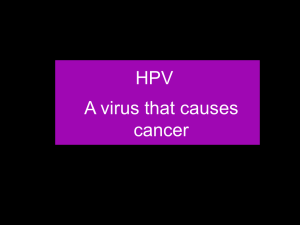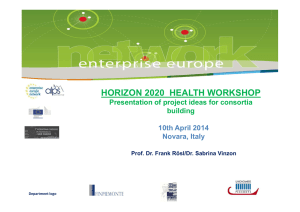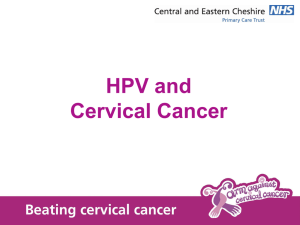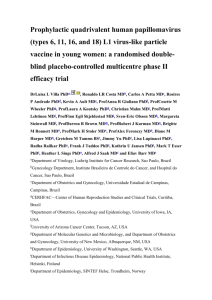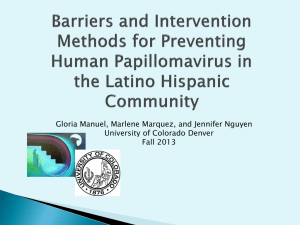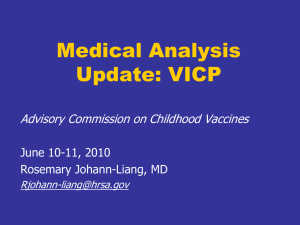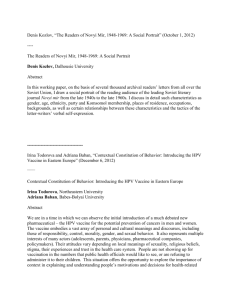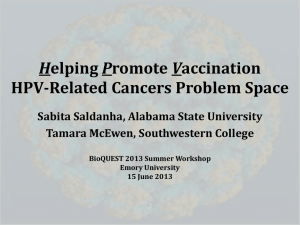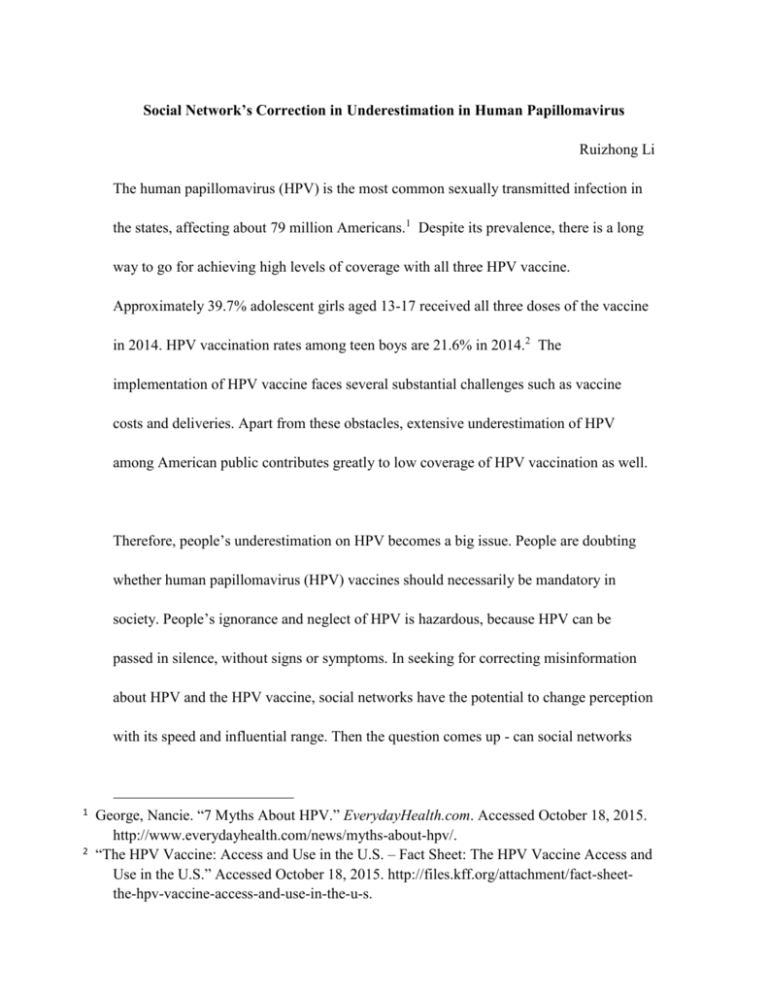
Social Network’s Correction in Underestimation in Human Papillomavirus
Ruizhong Li
The human papillomavirus (HPV) is the most common sexually transmitted infection in
the states, affecting about 79 million Americans.1 Despite its prevalence, there is a long
way to go for achieving high levels of coverage with all three HPV vaccine.
Approximately 39.7% adolescent girls aged 13-17 received all three doses of the vaccine
in 2014. HPV vaccination rates among teen boys are 21.6% in 2014.2 The
implementation of HPV vaccine faces several substantial challenges such as vaccine
costs and deliveries. Apart from these obstacles, extensive underestimation of HPV
among American public contributes greatly to low coverage of HPV vaccination as well.
Therefore, people’s underestimation on HPV becomes a big issue. People are doubting
whether human papillomavirus (HPV) vaccines should necessarily be mandatory in
society. People’s ignorance and neglect of HPV is hazardous, because HPV can be
passed in silence, without signs or symptoms. In seeking for correcting misinformation
about HPV and the HPV vaccine, social networks have the potential to change perception
with its speed and influential range. Then the question comes up - can social networks
1
2
George, Nancie. “7 Myths About HPV.” EverydayHealth.com. Accessed October 18, 2015.
http://www.everydayhealth.com/news/myths-about-hpv/.
“The HPV Vaccine: Access and Use in the U.S. – Fact Sheet: The HPV Vaccine Access and
Use in the U.S.” Accessed October 18, 2015. http://files.kff.org/attachment/fact-sheetthe-hpv-vaccine-access-and-use-in-the-u-s.
correct people’s underestimation of HPV?
First, what are the reasons for underestimation in HPV and for neglect in HPV vaccines?
In general, the underestimation comes from several misinformation.
1. No sexual activity, no infection.
2. Children were too young to receive the vaccine.
3. No need for boys getting the shot, because only girls get HPV.
4. Pap test is an effective alternative.
5. No need for sexual active population to be inoculated, because HPV vaccine is
useless for this population.
6. …
The misinformation above leads to missing best opportunity to get the shots, unbalance
inoculation rates in genders, substituting pap test for vaccination, and low HPV vaccine
coverage in sexual active population. All these outcomes, resulting from underestimating,
lead to low vaccination coverage of whole population.
Second, what is social network? According to Prof. Bode’s lecture, the resources on social
network consist of friend and algorithm. We can design an experiment to measure the
influence of social network imposing on people’s attitude. What aspect of the problem can
social network solve? As we can see, there are several reasons for people to underestimate
HPV and to resist HPV vaccination. Among the misinformation above, which is the most
entrenched and hardest for social network to exert influence on; which is the most
amendable and susceptible to social network influence? These questions can be answered
by the following research method combining survey and experiment.
The research method includes a several-stage process. First, we randomly distribute
questionnaires on Facebook, and collect people’s attitudes toward HPV and HPV vaccines.
The questionnaires measure samples’ cognition in and attitude to HPV and HPV vaccine,
and the reasons for their cognition and attitude. Second, after collecting the questionnaires
and organizing the data, we select a smaller subsample within the sample surveyed. They
are selected with the principles of variety and representativeness. It means that they hold
different views on whether HPV vaccines are necessarily mandatory, and own different
explanations for their attitude. The subsample consists of balanced distributed people with
different attitudes. Then we randomly separate this subsample into control group and
treatment group. In the process of treatment, by imitating the Facebook social network
environment, we empower every subject in the sample to release information and related
stories about the HPV and HPV vaccines. It imitates the friend resource in social network.
At the beginning of the experiment, people holding positive attitude to HPV will probably
distribute information containing the scientific explanations for HPV and importance of
receiving HPV vaccine. At the same time, people in negative attitude will continue to
disseminate HPV misinformation. We can record the whole process of attitude changing
from time to time, and summarize the process into a period report. In the late stage of the
experiment, researchers can play a role of algorithm in social network. We can release
highly individualized content according to different people, as a supplement to friend
resource on social network. For instance, if one underestimates the HPV hazard and refuses
to receive vaccine because he thinks it is unnecessary for men to take HPV vaccine, we can
distribute a true story of a poor man who suffered from the cancers caused by HPV. We
can employ focus group discussion method in imitating algorithm process, in order to
record the nature reflection to the correction from social network. After the correcting
process, we collect the data of samples’ attitudes reversing and their changing range.
Finally, we can draw conclusion from the research. Among four explanations explaining
why people underestimate the HPV and resist HPV vaccine, the most susceptible one may
be the misinformation that no sexual activity, no infection. People will ultimately start their
first sexual experience at certain age. Engaging in sexual activities dramatically improve
the possibility to infect the virus, because there are no signs or symptoms of a HPV carrier.
However, it is hard for social network to persuade male, especially preteen boys to receive
the vaccine, which is widely considered as a preemptive treatment for cervical cancer.
Whether friend or algorithm resource is more powerful in correcting misinformation and
drawing public’s attention to potentially hazardous HPV, is still hard to conjecture.

